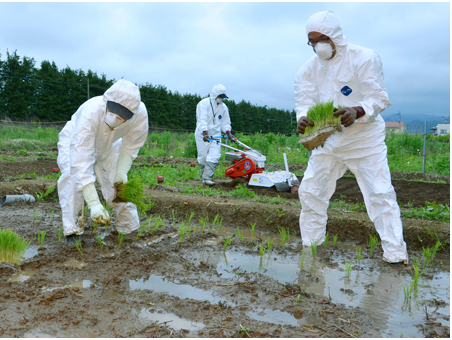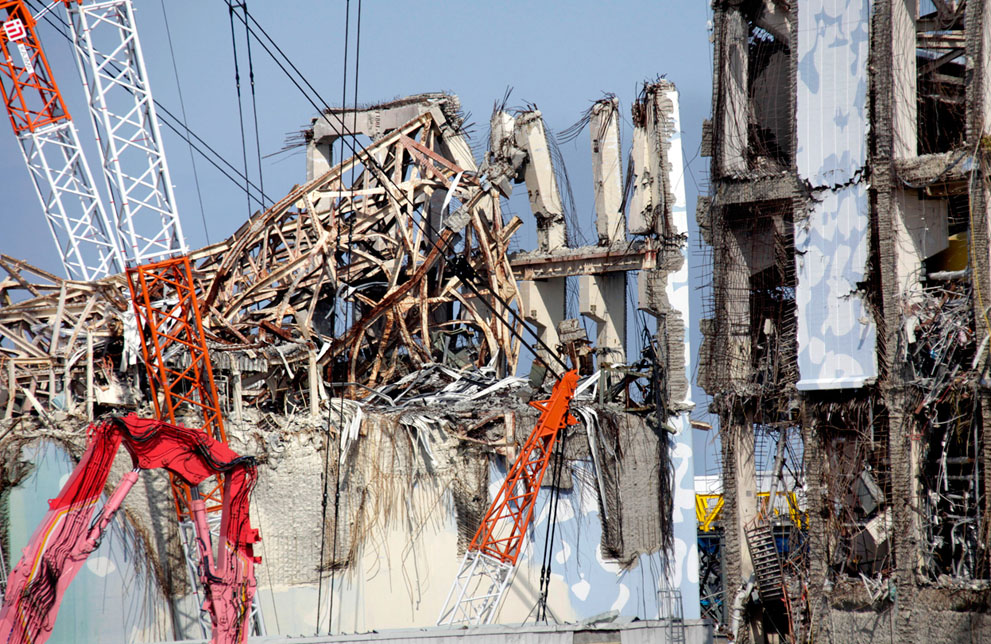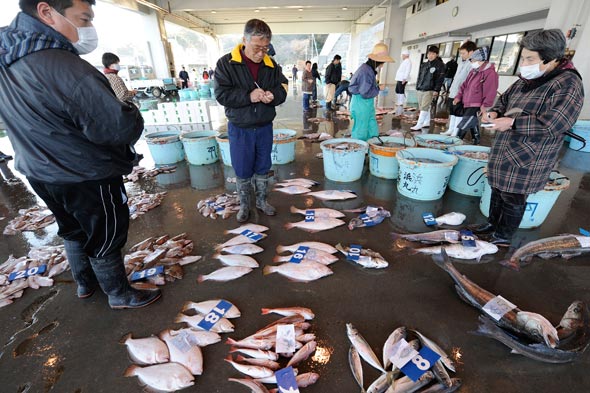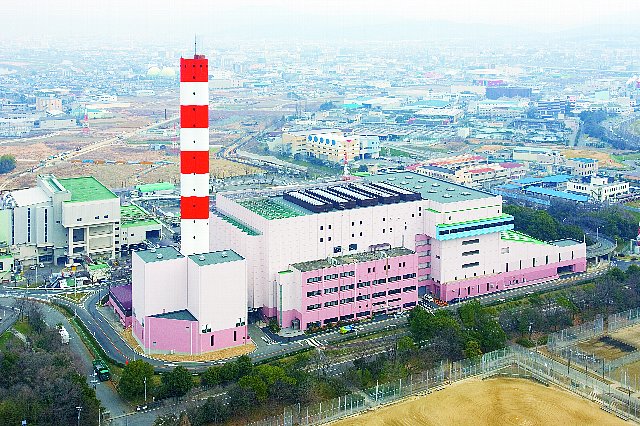Fukushima update from Kyoto’s eyes
Posted on June 28, 2012
Filed Under founder | Leave a Comment
 In Fukushima, workers in protective gear plant rice to moniter the uptake of nucleoids in contaminated soil….
In Fukushima, workers in protective gear plant rice to moniter the uptake of nucleoids in contaminated soil….
After realigning the energy production of Japan to include almost no nuclear production over the last year in response to public concern of the tragedy at the Daiichi Nuclear Complex in Fukushima, plants at the highest concentration of nuclear energy production in the world will be restarted in Oi, Fukui prefecture. Up until just weeks ago, politicians from all over the region had voiced their strong opposition to restarting the plants of concerns of risks and potential danger… only to have a suddent and mysterious about face. Even after proclamations at the National level just recently that Japan was committed to curbing its energy appetite and seek to bolster production in areas of renewables.
As a resident here in Japan the whole situation over the last 15 months has been absolutely surreal as I have tried to balance my desire to help the stricken, protect my family and attempt at best to obtain valid information on the actual risk and progress of the handling of the stricken Daiichi plants.
Though the government has claimed a successful cold shutdown of the plants, in all actuality only plant no. 2 has been examined at all and as of April the water level in for the fuel rods was found to be far lower than expected inferring a risk of overheated fuel which may melt resulting in the abilty to control reaction as they loose their stability. The radiation levels in no. 1 and 3 are so high that there is currently no instuments capable of viewing or establishing the condition in the plants…. Though they have stated controlled shutdown has be achieved there is no way of establishing the condition of the fuel or even if it is in the the primary containment vessel or escaped the secondary concrete containment area burning its way down to the water table which would result in a 'China Syndrome' situation….
The information coming out of the Fukushima area has been sparce and highly controlled, fueling concerns that the situation has left both Japanese and people worldwide at risk to nuclear exposure far exceeding what resulted from the Chernobyl accident some 28 years previous.
What do we know for sure?
The conditon of plant no.1 is completely unknown…. We can hope for the best but judging from the conditon of the plants we do have information on, it is doubtful that the outcome will be good. Some say that it may be 10 years before instrumental and actual verification can be achieved.
The condition of plant no. 2 is partially known however, though visual inspeciton was possible by instruments probing the plant, there is no assurance that the fuel is contained in the primary or secondary containment vessel. Beyond that, increased temperatures detected early this year led officials to believe that fission may still be taking place prompting TEPCO (Tokyo Power Company) to begin injecting 9.5 tons of water instead of the 1 ton per hour that they were injecting to cool the core…. Where is all that water going? And that pace since March means…. one tone per hour, 24 hours a day, 30 days monthly since march… thats perhaps 13,500,00 kg of water that has been pumped thru the plant… That water contaminated with nucleoids obviously has found its way to the sea since afterall, the plant is on the coast of the pacific ocean…

The condition of plant no.3 is well known and completely unknown at the same time.Extremely high radiation readings prevent any significant investigation into the interior condition of the plant however, we know that the plant was 5 stories high, and that the pool for the spent fuel was on the top. Looking to the bottom right we can see a man standing giving the impression that no more than 25 feet of building is standing intact…. I wonder where exactly the pool is? Just for numbers, there "was" 88 tons of MOX fuel with extremely high levels of plutonium in the pool. To put into perspective how dangerous that amount of fissionable material being ejected in the environment ( reports of pieces of fuel rod being found 3 kilometers from the reactor ), the bomb dropped over Hiroshima in 1945 discharged only about 100 pounds, and Nagasaki about 10 pounds.
As for plant no.4, it may be the biggest wild card left to play.
Japanese Newspaper The Mainchi News reported on Monday April 2, 2012:
The storage pool in the No. 4 reactor building has a total of 1,535 fuel rods, or 460 tons of nuclear fuel, in it. The 7-story building itself has suffered great damage, with the storage pool barely intact on the building’s third and fourth floors. The roof has been blown away. If the storage pool breaks and runs dry, the nuclear fuel inside will overheat and explode, causing a massive amount of radioactive substances to spread over a wide area. Both the U.S. Nuclear Regulatory Commission (NRC) and French nuclear energy company Areva have warned about this risk…..
 Finally, we are looking at a situation where it is estimated that thousands of tons of water monthly has been running thru these plants monthly since the accident in March of 2012. This water is mostly uncontained and being on the sea shore, a great percentage of it is carrying nucleoids of uranium, plutonium, cesium, americum, californium etc. directly into the sea that sits just meters from the plants. These nucleoids are being incorporated into the plant life at on the sea floor off of fukushima, eaten by small sealife, which is in turn eaten by larger fish… and is now being carried around the world such as the radioactive tuna caught off the coast of San Diego Californa in May 2012….
Finally, we are looking at a situation where it is estimated that thousands of tons of water monthly has been running thru these plants monthly since the accident in March of 2012. This water is mostly uncontained and being on the sea shore, a great percentage of it is carrying nucleoids of uranium, plutonium, cesium, americum, californium etc. directly into the sea that sits just meters from the plants. These nucleoids are being incorporated into the plant life at on the sea floor off of fukushima, eaten by small sealife, which is in turn eaten by larger fish… and is now being carried around the world such as the radioactive tuna caught off the coast of San Diego Californa in May 2012….
Food from the area is checked, and the levels of contamination in residence areas and schools are checked to assure safety and that people are not being left in high risk areas however all radiation levels are not the same. When the authorities say that the levels of radiation is safe in tested sea food, beef, chicken, pork, and vegetables they are only speaking of nominal exposure and not making a distinction between ionizing and non ionizing radiation which is something that I hope you will study it for your own good, the radiation we talk about here is radiation that we CONSUME and INHALE. These nucleoids then become part of our body delivering a constant cumulative dose of ionizing radiation that is much, much more severe in terms of exposure that the nominal level of exposure measured in the products.
And where the simplest and probably the most ecologically sound option for dealing with the  great amount of debris both from Fukushima and the adjoining prefectures would be to just pile it all up in the valley that lies just west of the reactors to let nature take its course…. The government has decided to spread contaminated topsoil to every prefecture in Japan to be disposed of in sealed landfills and then to spread the burnable debris around Japan to be incinerated at places just like this 'clean factory' near my house in Kyoto, vaporizing the radioactive nucleoids and spreading them from Hokkaido to Okinawa and beyond as the weather takes them up and condenses them in clouds to rain their havoc down on North America and Europe…..
great amount of debris both from Fukushima and the adjoining prefectures would be to just pile it all up in the valley that lies just west of the reactors to let nature take its course…. The government has decided to spread contaminated topsoil to every prefecture in Japan to be disposed of in sealed landfills and then to spread the burnable debris around Japan to be incinerated at places just like this 'clean factory' near my house in Kyoto, vaporizing the radioactive nucleoids and spreading them from Hokkaido to Okinawa and beyond as the weather takes them up and condenses them in clouds to rain their havoc down on North America and Europe…..
This situation is far from over and needs to be on all of our radars, regardless of whether you are resident of Japan, America or any other northern hemesphere country…
Comments
Please Comment